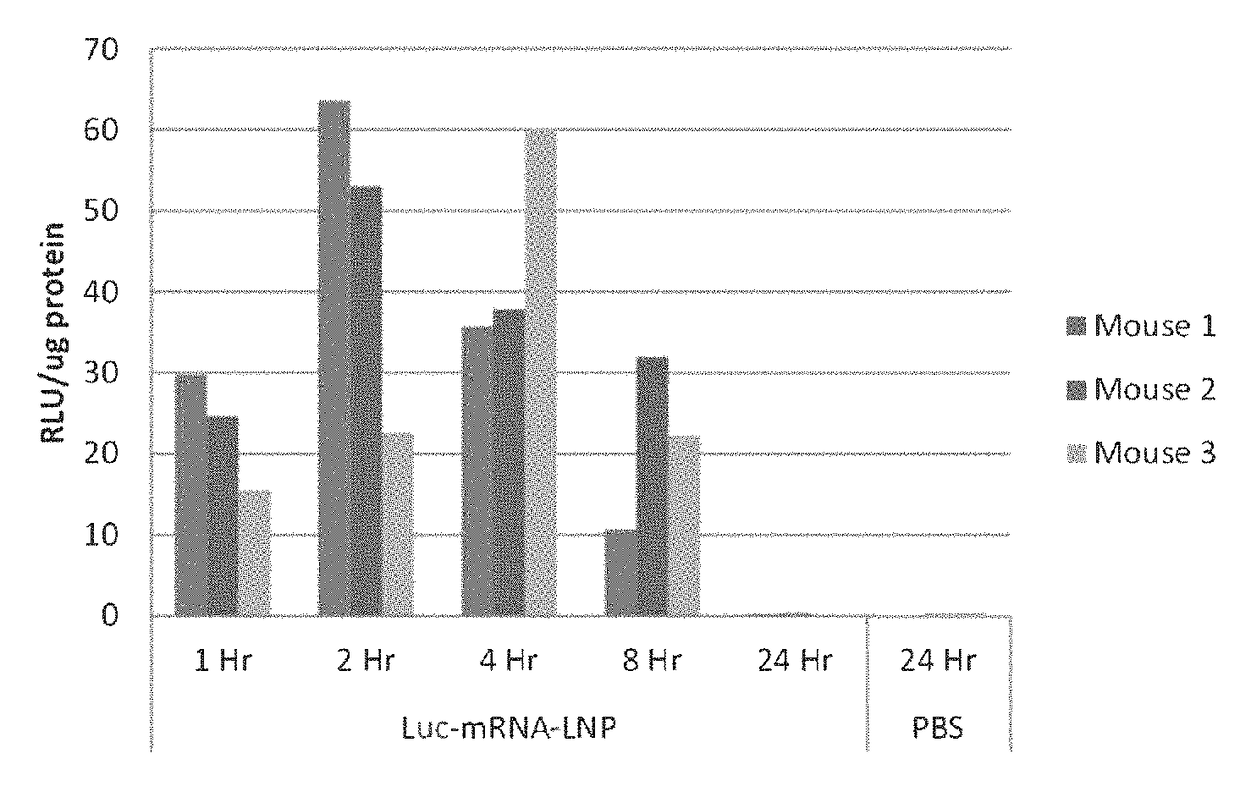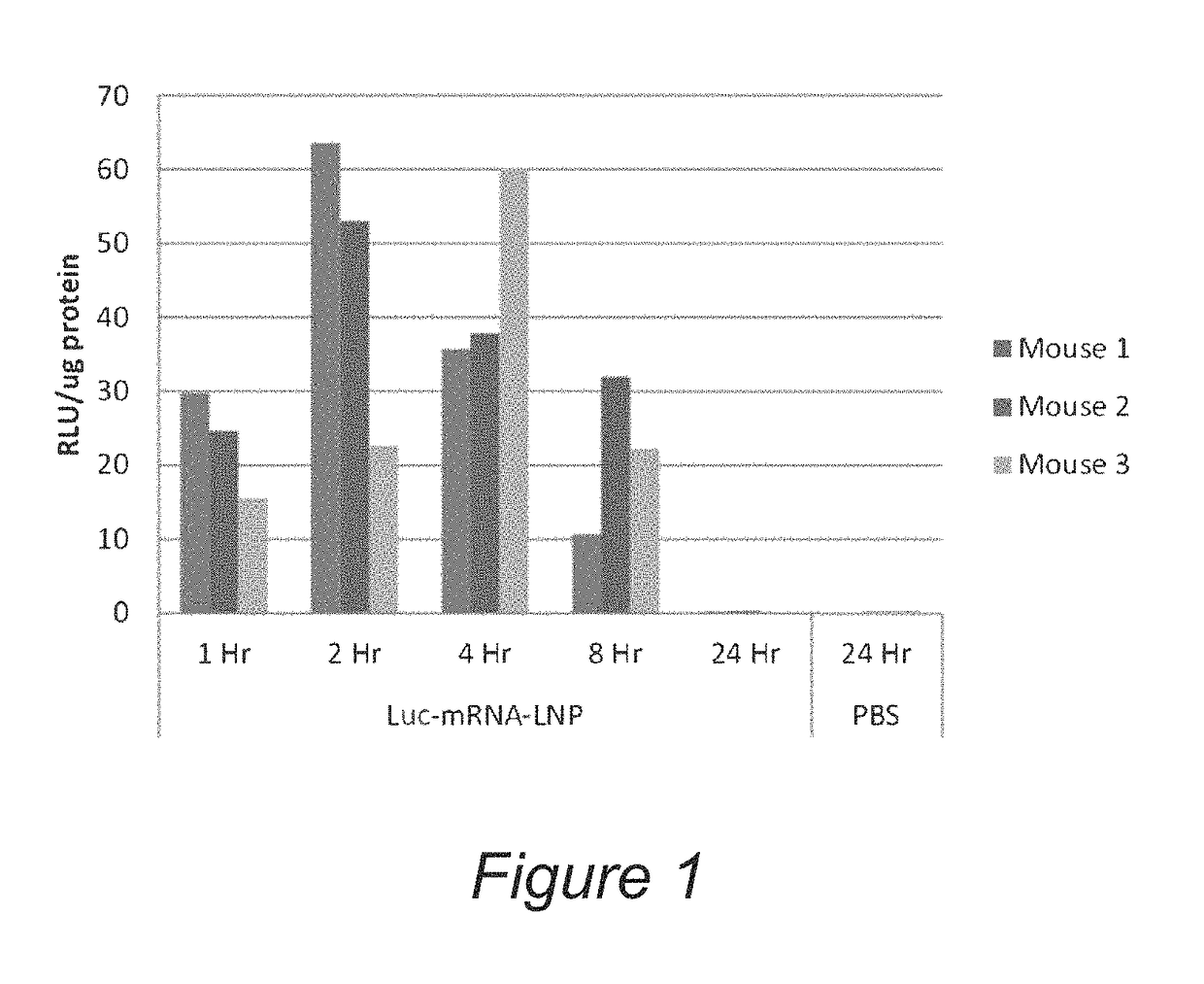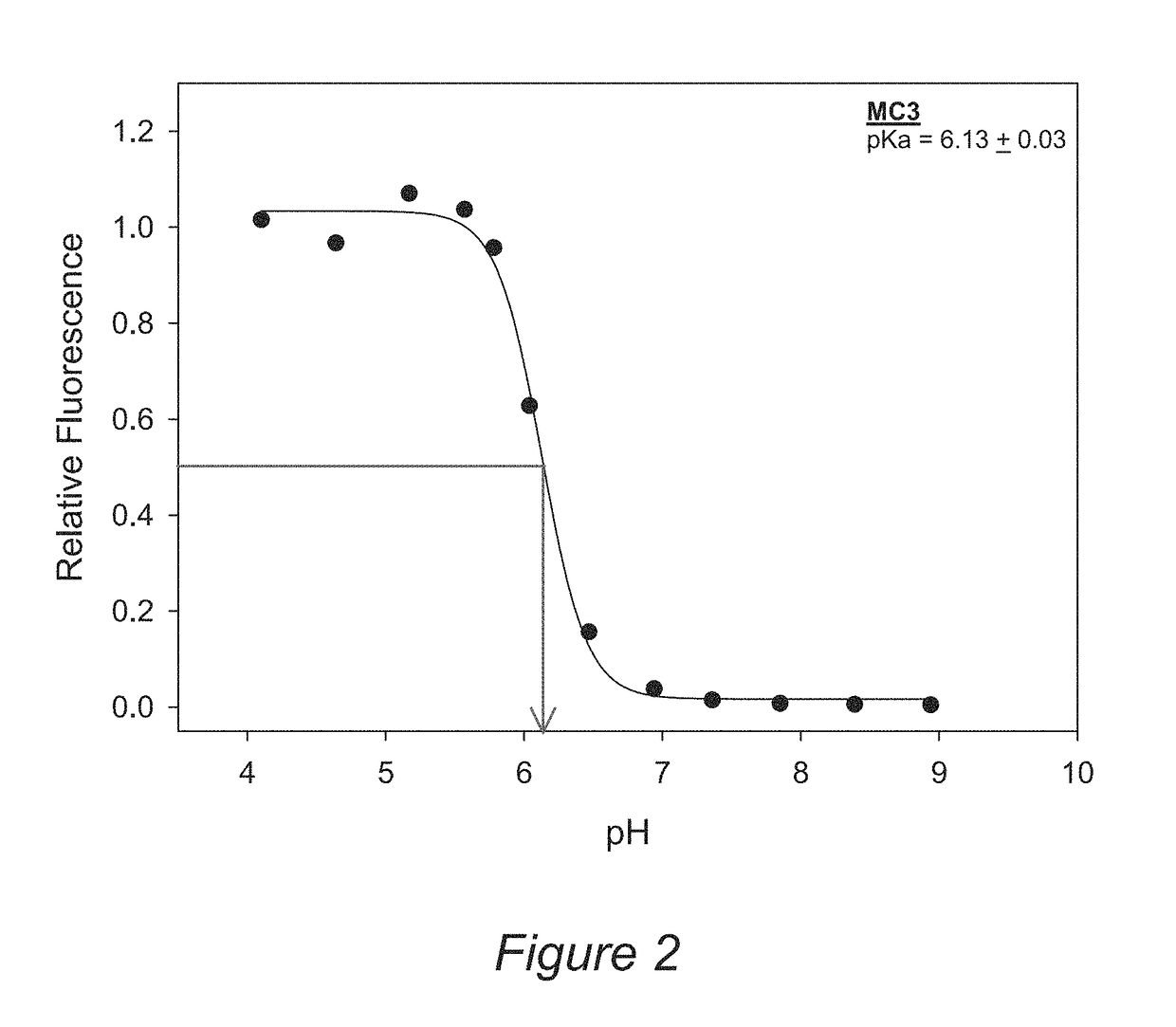Lipids and lipid nanoparticle formulations for delivery of nucleic acids
a technology of nucleic acids and nanoparticles, which is applied in the direction of drug compositions, peptide/protein ingredients, genetic material ingredients, etc., can solve the problems of limited ability of free rnas to gain access to the intracellular compartment, and susceptible to nuclease digestion in plasma
- Summary
- Abstract
- Description
- Claims
- Application Information
AI Technical Summary
Benefits of technology
Problems solved by technology
Method used
Image
Examples
example 1
Synthesis of Compound 1
[0194]Compound 1 was prepared according to method B as follows:
[0195]A solution of octan-1,8-diol (9.8 g) in methylene chloride (100 mL) and tetrahydrofuran (60 mL) was treated with 2-ethylhexanoyl chloride (10 g). Triethylamine (15 mL) was slowly added and the solution stirred for three days. The reaction mixture was filtered and the filtrate washed with brine (2×). The organic fraction was dried over anhydrous magnesium sulfate, filtered and the solvent removed. The crude product was filtered through silica gel (20 g) using methylene chloride, yielding 15.8 g of crude product. The resultant oil was dissolved in methylene chloride (100 mL) and treated with pyridinum chlorochromate (13 g) for two hours. Diethyl ether (400 mL) as added and the supernatant filtered through a silica gel bed. The solvent was removed from the filtrate and resultant oil passed down a silica gel (77 g) column using a ethyl acetate / hexane (0-6%) gradient. 8-O-(2′-ethylhexanoyloxy)octa...
example 2
Synthesis of Compound 2
[0197]Compound 2 was prepared according to method A as follows:
[0198]Under an argon atmosphere, to a round-bottom flask charged with phytol (593 mg, 2 mmol), 6-bromohexanoic acid (780 mg, 4 mmol) and 4-(dimethylamino)pyridine (60 mg) in dichloromethane (20 mL) was added dicyclohexylcarbodiimide (908 mg, 4.4 mmol). The precipitate was discarded by filtration. The filtrate was concentrated and the resulting residue was purified by column chromatography on silica gel eluted with a gradient mixture (0% to 3%) of ethyl acetate in hexanes. This gave a colorless oil (0.79 g 1.67 mmol, 83%) of (E)-3,7,11,15-tetramethylhexadec-2-enyl 6-bromohexanoate.
[0199]A solution of (E)-3,7,11,15-tetramethylhexadec-2-enyl 6-bromohexanoate (0.42 g, 0.887 mmol), N,N-diisopropylethylamine (1.5 mol eq., 1.33 mmol, MW 129.25, 171 mg) and N,N-dimethylethylenediamine (39 mg, 0.44 mmol) in DMF (4 mL) was heated at 77 C for 18 h. The reaction mixture was then cooled and extracted with hexan...
example 3
Synthesis of Compound 3
[0200]Compound 3 was prepared in a manner analogous to compound 2 starting from bromoacetic acid, rather than 6-bromohexanoic acid, to yield 22 mg of thick colorless oil, 0.029 mmol, 6%. 1HNMR (400 MHz, CDCl3) δ: 5.32 (m, 2H), 4.62 (m, 4H), 3.62 (s, 2H), 3.60 (s, 2H), 3.28-2.33 (m, 10H), 2.09-2.00 (m, 4H), 1.76 (s, 3H), 1.70 (s, 3H), 1.60-1.47 (m, 6H), 1.47-0.97 (32H), 0.89-0.84 (m, 24H).
PUM
 Login to View More
Login to View More Abstract
Description
Claims
Application Information
 Login to View More
Login to View More - R&D
- Intellectual Property
- Life Sciences
- Materials
- Tech Scout
- Unparalleled Data Quality
- Higher Quality Content
- 60% Fewer Hallucinations
Browse by: Latest US Patents, China's latest patents, Technical Efficacy Thesaurus, Application Domain, Technology Topic, Popular Technical Reports.
© 2025 PatSnap. All rights reserved.Legal|Privacy policy|Modern Slavery Act Transparency Statement|Sitemap|About US| Contact US: help@patsnap.com



